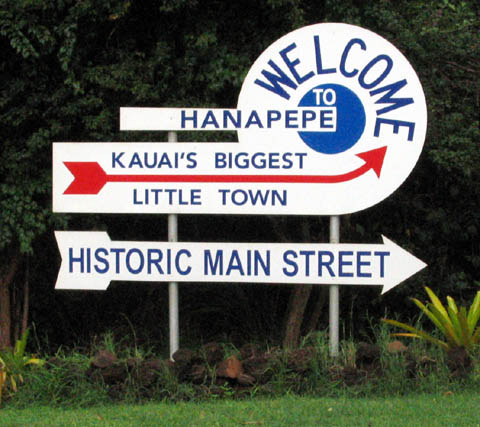The
1924 Filipino Cane Strike in Hanapepe
In 1924, principal
Filipino groups (Visayan, Tagalog, and Ilocano) in Hawai‘i
were divided by background, culture, and language. For Filipinos
as a whole, there were the additional problems of an overwhelming
proportion of single men compared to women, scant education, general
lack of community roots, and low-status jobs, almost totally on
plantations.
Some 48,000 Filipinos, more than four-fifths of whom were men, were
recruited between 1906 and 1924 to labor in Hawai‘i’s
sugar cane fields. Most were Visayans from south-central Philippines
and Ilocanos from the north.
“Nineteen-eleven, there were agents going around
who were advertising working here in Hawai‘i . . . They would
give you a prize or a reward of ten dollars if you agreed to go.
Because there were a lot of Visayans going I was also carried along
with the group and agreed to go.” —Dimitrio Rivera
As the last immigrant group to work on Hawai‘i’s sugar
plantations, they were paid the lowest wages. In 1924, Pablo Manlapit,
a labor organizer and leader among the Visayans, called a strike
for higher wages and better working conditions. But Cayetano Ligot,
an Ilocano labor commissioner from the Philippines, persuaded Ilocano
workers not to strike. Out of thousands of plantation workers on
Kaua‘i, about 600 participated, including women and children.
“Our real hope, when we first arrived at the strike
camp, was that we might be able to win this strike if we stay united
together, and if nothing happens.” —Sulpicio Venyan
On Sept. 9, 1924, strikers and police clashed at a strike camp in
Hanapepe. Armed police had gone to pick up two Ilocanos at the strike
camp, believing them to be prisoners of the strikers. How the battle
precipitated by the confrontation actually started is unclear. Outarmed
by police, strikers fought with cane knives, sticks, and a few guns.
“There were probably half a dozen, six or eight
of ’em (police). But they had the advantage because they had
rifles, and the Filipinos had nothing but pistols. It wasn’t
a real battle; it was a slaughter, really.” —Lindsay
Faye
“When I heard the shooting, I began to run . .
. I didn’t even have a knife. I had nothing to defend myself
with. There were others who had guns, but they only had two bullets.
They were courageous, they were acting tough . . . They’re
the ones who died. I’m a coward. Those who ran away, they
didn’t die.” —Agapito Bakiano
The battle claimed the lives of sixteen Filipino strikers and four
policemen. National Guardsmen from Honolulu were rushed to the scene
to quell further fighting. Strikers and their leaders were arrested,
tried, and imprisoned; many were later deported to the Philippines.
The strikers failed to achieve their objectives despite the high
cost in lives. It was to be over a decade before Filipino workers
again organized to strike against the sugar plantations.
To see the University
of Hawaii source for this material click here:
http://www.oralhistory.hawaii.edu/pages/historical/1924.html
for more Hawaiina
oral projects click here:
http://www.oralhistory.hawaii.edu/pages/projects.html
|
